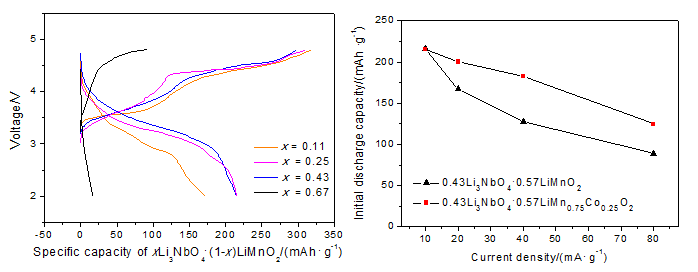| [1] Tarascon, J.-M.; Armand, M. Nature 2001, 414(6861), 359.
[2] Etacheri, V.; Marom, R.; Elazari, R.; Salitra, G.; Aurbach, D. Energy Environ. Sci. 2011, 4(9), 3243.
[3] Du, K.; Hu, G. R. Chin. Sci. Bull. 2012, 57(10), 794. (杜柯, 胡国荣, 科学通报, 2012, 57(10), 794.)
[4] Zhao, Y.-J.; Feng, H.-L.; Zhao, C.-S.; Sun, Z.-Q. J. Inorg. Mater. 2011, 26(07), 673. (赵煜娟, 冯海兰, 赵春松, 孙召琴, 无机材料学报, 2011, 26(07), 673.)
[5] Yang, Y.; Gong, Z.; Wu, X.; Zheng, J.; Lü, D. Chin. Sci. Bull. 2012, 57(27), 2570. (杨勇,龚正良,吴晓彪,郑建明,吕东平, 科学通报, 2012, 57(27), 2570.)
[6] Ukei, K.; Suzuki, H.; Shishido, T.; Fukuda, T. Acta Crystallogr. C 1994, 50(5), 655.
[7] Yabuuchi, N.; Takeuchi, M.; Endo, D.; Ozaki, T.; Inamasu, T.; Son, J.-Y.; Cui, Y.-T.; Oji, H.; Komaba, S. Meet. Abstr. 2013, MA2013-02(12), 874.
[8] Yabuuchi, N.; Takeuchi, M.; Nakayama, M.; Shiiba, H.; Ogawa, M.; Nakayama, K.; Ohta, T.; Endo, D.; Ozaki, T.; Inamasu, T.; Sato, K.; Komaba, S. Proc. Natl. Acad. Sci. 2015, 112(25), 7650.
[9] Sathiya, M.; Abakumov, A. M.; Foix, D.; Rousse, G.; Ramesha, K.; Saubanère, M.; Doublet, M. L.; Vezin, H.; Laisa, C. P.; Prakash, A. S.; Gonbeau, D.; VanTendeloo, G.; Tarascon, J.-M. Nat. Mater. 2015, 14(2), 230.
[10] Hou, M.-Y.; Bao, H.-L.; Wang, K.; Wang, J.-Q.; Xia, Y.-Y. J. Electrochem. 2016, 22(3), 288. (候孟炎, 鲍洪亮, 王珂, 王建强, 夏永姚, 电化学, 2016, 22(3), 288.)
[11] Deng, Z. Q.; Manthiram, A. J. Phys. Chem. C 2011, 115(14), 7097. |
